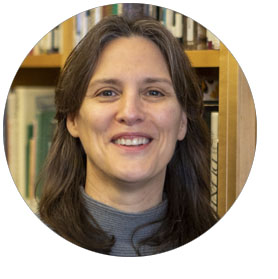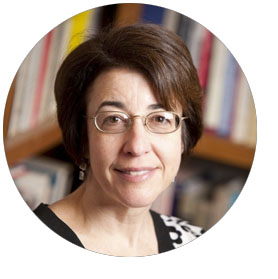
Join exhibition curator and author Margaret Bullock as well as faculty from Willamette University as they delve into the art, social history, literature, and the science of the 1930s in this complimentary lecture series which can be viewed online starting in January 2021.
Wonders, Blunders, and Everything in Between: The New Deal Art Projects in the Northwest
Margaret Bullock
Interim Chief Curator of Collections and Special Exhibitions, Tacoma Art Museum
During the economic hard times of the 1930s, U.S. government art projects under the WPA and other agencies created a wealth of public art and supported art communities across the country. In the Northwest hundreds of artists were employed and thousands of artworks were created but this history is little known. Margaret Bullock provides an overview of the bounty and variety of work from our region as well as some of the triumphs and challenges behind their creation.
 Margaret E. Bullock is Interim Chief Curator and Curator of Collections and Special Exhibitions, Tacoma Art Museum. She holds an MA in Anthropology from Washington State University and an MA in Art History from the University of Oregon. Prior to joining the Tacoma Art Museum in 2007, she was curator at the Harwood Museum of Art in Taos, New Mexico; Associate Curator of American Art at the Portland Art Museum, Oregon; and a research fellow in American art at the Montgomery Museum of Fine Arts, Alabama. She has curated exhibitions and written articles and books on American and European fine and decorative arts. Her specialty is late 19th- and early 20th-century American art with a particular focus on the art of the Pacific Northwest.
Margaret E. Bullock is Interim Chief Curator and Curator of Collections and Special Exhibitions, Tacoma Art Museum. She holds an MA in Anthropology from Washington State University and an MA in Art History from the University of Oregon. Prior to joining the Tacoma Art Museum in 2007, she was curator at the Harwood Museum of Art in Taos, New Mexico; Associate Curator of American Art at the Portland Art Museum, Oregon; and a research fellow in American art at the Montgomery Museum of Fine Arts, Alabama. She has curated exhibitions and written articles and books on American and European fine and decorative arts. Her specialty is late 19th- and early 20th-century American art with a particular focus on the art of the Pacific Northwest.
A New Deal for (some) Americans: Innovation and its Limits during the Great Depression
Ellen Eisenberg
Dwight & Margaret Lear Professor of American History, Willamette University
With the economy in shambles and rampant unemployment, there was no clear path forward as the Great Depression took hold. Conventional wisdom dictated that there was little the government could or should do to intervene economically or to alleviate Americans’ suffering. Rejection of that conventional wisdom catapulted Franklin D. Roosevelt into the White House, unleashing a wave of relief, recovery, and reform initiatives and a new vision of federal responsibility. This lecture will explore the innovation of FDR’s New Deal, including the programs that put visual artists, writers, and musicians back to work. It will also explore the limits of that innovation by highlighting the ways in which the New Deal reinforced and perpetuated structural racism and inequality.
 Ellen Eisenberg’s research and teaching focuses on American ethnic history, with an emphasis on American Jewish history and relations among diverse ethnic and racial groups in the American West. She is the author of five monographs, including The First to Cry Down Injustice?: Western Jews and Japanese American Removal during WWII, which was a National Jewish Book Award finalist. She holds the Dwight & Margaret Lear Chair in American History at Willamette University.
Ellen Eisenberg’s research and teaching focuses on American ethnic history, with an emphasis on American Jewish history and relations among diverse ethnic and racial groups in the American West. She is the author of five monographs, including The First to Cry Down Injustice?: Western Jews and Japanese American Removal during WWII, which was a National Jewish Book Award finalist. She holds the Dwight & Margaret Lear Chair in American History at Willamette University.
Raining Poetry: The Culture and Politics of American Literature during the Great Depression
Mike Chasar
Associate Professor of English, Willamette University
This lecture takes us beyond The Grapes of Wrath and into the guts of American literature during the Great Depression. From local newspapers to pulp magazines, Communist Party publications, personal scrapbooks, and even the front lines of World War II, American writing—especially American poetry—was charged by the social, political, economic, and cultural issues of the day and embedded in almost every facet of daily life.
 Mike Chasar is the author of Poetry Unbound: Poems and New Media from the Magic Lantern to Instagram (Columbia University Press, 2020) and Everyday Reading: Poetry and Popular Culture in Modern America (Columbia University Press, 2012). He is an Associate Professor of English at Willamette University.
Mike Chasar is the author of Poetry Unbound: Poems and New Media from the Magic Lantern to Instagram (Columbia University Press, 2020) and Everyday Reading: Poetry and Popular Culture in Modern America (Columbia University Press, 2012). He is an Associate Professor of English at Willamette University.
___________________________
View lecture now Further Reading
Brilliance in Dark Times: Transformative Innovations in Science and Technology during the Great Depression
Karen McFarlane Holman
Professor of Chemistry, Willamette University
Note: This lecture is appropriate for middle school and high school level students. Parents may want to preview the video.
The multitude of inventions that emerged in the 1930s is in stark contrast to what one might expect for this era. At a time when an enormous percentage of Americans were unemployed, many inventors’ minds and hands were clearly still at work. The percentage of successful patents stayed strong, gifting us with items that we still use today. In this presentation we’ll unveil the stories and science behind a number of inventions that fall into a variety of realms: women’s rights, a necessary evil, fashion, rock ‘n’ roll, and a fantastical contraption brought to life from a Jules Verne novel.
 Karen McFarlane Holman specializes in the chemistry of metals with a focus on novel ruthenium-based anti-cancer agents. She has authored 24 scientific articles and book chapters, described her research at TEDxSalem, and in 2010 she was awarded Professor of the Year by the Carnegie Foundation. She is a Professor of Chemistry at Willamette University, founder of KMUZ-FM, and the creator of two online programs called Make Time for Science and the interactive kids program entitled Science Rockstar Kids.In addition, she has been playing in rock bands for over 25 years.
Karen McFarlane Holman specializes in the chemistry of metals with a focus on novel ruthenium-based anti-cancer agents. She has authored 24 scientific articles and book chapters, described her research at TEDxSalem, and in 2010 she was awarded Professor of the Year by the Carnegie Foundation. She is a Professor of Chemistry at Willamette University, founder of KMUZ-FM, and the creator of two online programs called Make Time for Science and the interactive kids program entitled Science Rockstar Kids.In addition, she has been playing in rock bands for over 25 years.
Financial Support
Support for this virtual lecture series has been made possible in part by the National Endowment for the Humanities: Coronavirus Aid, Relief, and Economic Security (CARES) Act.

